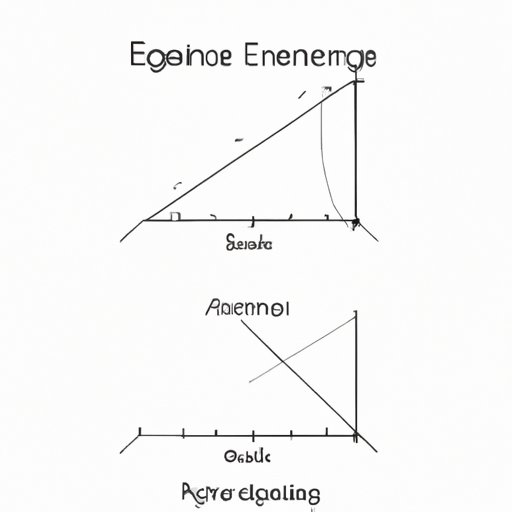
Introduction
Many fields, such as physics and engineering, require the ability to find the angle between two vectors. Understanding how to do so can prove to be integral to solving problems in various applications. This article aims to teach you how to find the angle between two vectors through the use of the dot product.
Basics of Vectors
Before delving into the specifics of finding angles between vectors, it is important to understand the basics of vectors. Vectors are mathematical objects that have both a magnitude and a direction. They can be added together or multiplied by a scalar. In other words, vectors can be moved around in space and scaled up or down without losing its direction.
Vectors are commonly represented through notation, such as with an over arrow: a or b.
Dot Product
The dot product, also known as the scalar product, is a mathematical operation used to find the angle between two vectors. The dot product is calculated by multiplying the magnitudes of two vectors and then multiplying that by the cosine of the angle between the vectors. The result is a scalar value.
Formula:
The formula to calculate the dot product is:
a • b = |a| |b| cos(θ)
Where a and b are two vectors, |a| and |b| are their magnitudes, and θ is the angle between them.
Visual Aids
Visual aids are helpful tools to understand the concept of vectors and the dot product. Graphs can be used to illustrate vectors in a two-dimensional space or three-dimensional space. Diagrams, such as the triangle law, can be used to demonstrate the relationship between vectors. Step-by-step demonstrations can help in understanding the process of finding the dot product and its relation to the angle between vectors.
Real-World Examples
The concept of finding the angle between two vectors is not just a mathematical exercise, it can also be applied in real-world scenarios. For instance, in physics, projectile motion problems can be solved using vectors and the angle between them. Likewise, in engineering, forces acting on an object can be determined through the use of vectors and the angle between them.
Simple Steps to Find Angles
Now that the basics have been covered, here is a simple step-by-step process to find the angle between two vectors using the dot product:
- Find the magnitudes of each vector
- Multiply the magnitudes of the two vectors
- Calculate the dot product of the two vectors
- Use the formula to find the angle between the two vectors
Acute and Obtuse Angles
When finding the angle between two vectors, it is important to be aware of whether the angle is acute or obtuse. An acute angle is an angle less than 90 degrees, while an obtuse angle is an angle greater than 90 degrees.
When calculating the angle between two vectors, if the result is between 0 and 90 degrees, it is the acute angle between the two vectors. If the result is between 90 and 180 degrees, it is the obtuse angle between the two vectors.
Practice Problems
To reinforce the concepts covered in this article, here are some practice problems:
- Find the angle between the vectors a = 3i – 2j and b = 2i + j.
- Find the angle between the vectors c = –i – 3j and d = –i + j.
Answers to these practice problems can be found below.
Conclusion
The angle between two vectors can be found using the dot product. Understanding the concept of vectors, the dot product, acute and obtuse angles, and practicing with examples are all important steps in gaining a mastery of this important concept. Whether in physics or engineering, knowing how to find the angle between vectors is a crucial tool in problem-solving and analysis.
Remember, the formula to calculate the dot product is:
a • b = |a| |b| cos(θ)
Knowing this formula, as well as the steps outlined in this article, will enable you to easily find the angle between two vectors.
Practice Problem Solutions
- Using the formula, we can find that the dot product of the vectors a and b is:
3(2) + (-2)(1) = 4
The magnitudes of a and b are:
|a| = √(3² + (-2)²) = √13
|b| = √(2² + 1²) = √5
Using the formula again:
cos(θ) = 4 / (√13 * √5) = 0.8839
θ ≈ 28.6°
- Using the formula, we can find that the dot product of the vectors c and d is:
(-1)(-1) + (-3)(1) = -4
The magnitudes of c and d are:
|c| = √((-1)² + (-3)²) = √10
|d| = √((-1)² + 1²) = √2
Using the formula again:
cos(θ) = -4 / (√10 * √2) = -1.265
θ does not exist as the result of the formula is outside the valid range of cosine (-1,1). However, we can see from the dot product that the angle between the two vectors is obtuse.




